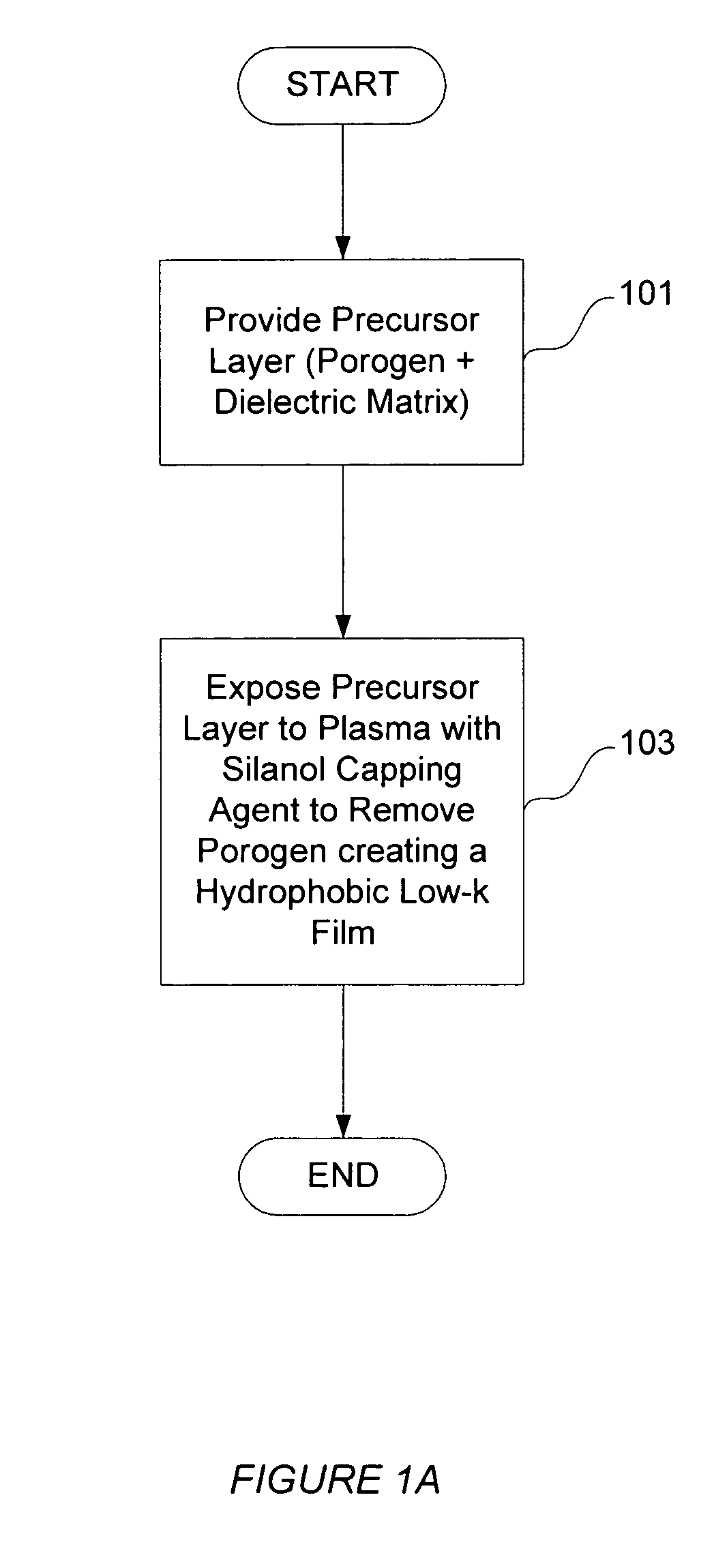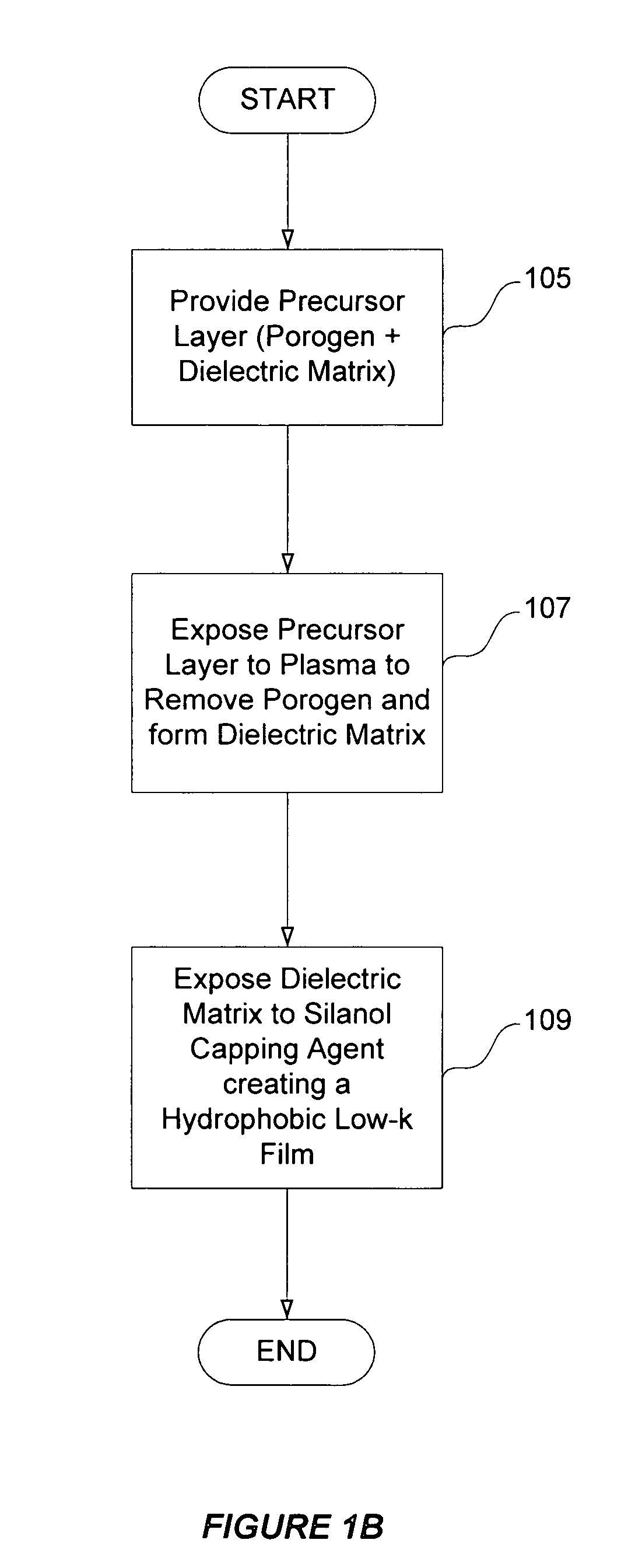Plasma detemplating and silanol capping of porous dielectric films
a dielectric film and silanol technology, applied in the field of porous film preparation, can solve the problems of significant challenges, however, associated with forming porous dielectric materials, and significantly increasing the overall dielectric constant of films
- Summary
- Abstract
- Description
- Claims
- Application Information
AI Technical Summary
Benefits of technology
Problems solved by technology
Method used
Image
Examples
embodiment 1
Plasma Porogen Removal and In Situ Silanol Capping
[0039]FIG. 1A is a flowchart summarizing aspects of a first embodiment of the invention. First, as indicated at block 101, a substrate with a deposited precursor layer is provided. As described previously, the precursor layer may be an ordered or mesoporous precursor layer or it may be a non-ordered precursor layer. In preferred embodiments, the precursor layer is an ordered mesoporous layer comprising template porogen and a silicon-containing dielectric phase which will become the dielectric matrix once the porogen is removed. In cases wherein a mesoporous precursor layer is used, this process is called “detemplating.”
[0040]Next, one of various suitable plasma techniques is used to 1) remove at least a portion of the porogen material from the precursor layer and to 2) protect or “cap” hydrophilic portions of the dielectric matrix using a “silanol capping” agent. See 103. For removing porogen, any suitable plasma method that can caus...
embodiment 2
Plasma Porogen Removal Followed by Silanol Capping
[0047]FIG. 1B is a flowchart summarizing aspects of a second embodiment of the invention. First, as indicated by block 105, a substrate with a deposited precursor layer is provided as described in the previous embodiment. Next, as indicated in block 107, the porogen is removed from the precursor layer using a plasma process. As in the previous embodiment, the plasma may be a reducing plasma or an oxidizing plasma. Plasma conditions and compositions are similar to those of the previous embodiment but without the silanol capping agent. As in the previous embodiment, the porogen decomposition components and other byproducts may be removed by volatilization (e.g., heating the wafer substrate and pumping away the residuals).
[0048]After porogen removal, the resulting dielectric matrix is exposed to a silanol capping agent, as indicated by process block 109. Note that this silanol capping process is preferably done without exposing the diel...
PUM
| Property | Measurement | Unit |
|---|---|---|
| power | aaaaa | aaaaa |
| temperature | aaaaa | aaaaa |
| chamber pressure | aaaaa | aaaaa |
Abstract
Description
Claims
Application Information
 Login to View More
Login to View More - R&D
- Intellectual Property
- Life Sciences
- Materials
- Tech Scout
- Unparalleled Data Quality
- Higher Quality Content
- 60% Fewer Hallucinations
Browse by: Latest US Patents, China's latest patents, Technical Efficacy Thesaurus, Application Domain, Technology Topic, Popular Technical Reports.
© 2025 PatSnap. All rights reserved.Legal|Privacy policy|Modern Slavery Act Transparency Statement|Sitemap|About US| Contact US: help@patsnap.com



